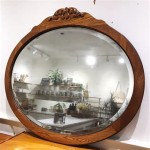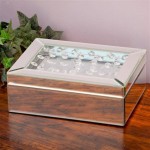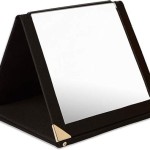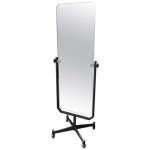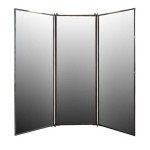What Should I Use To Hang A Heavy Mirror?
Hanging a heavy mirror requires careful consideration of the mirror's weight, the wall's construction, and the appropriate hanging hardware. Choosing the incorrect hardware can result in damage to the wall, the mirror, or both. This article will explore various hardware options and best practices for securely hanging heavy mirrors.
Before selecting any hardware, accurately determine the weight of the mirror. Bathroom scales can be useful for this purpose. It’s crucial to select hardware rated to hold a weight exceeding the mirror’s actual weight. This provides a safety margin and ensures a secure hanging.
The wall construction plays a significant role in hardware selection. Drywall offers less inherent support than a stud wall. For heavy mirrors, locating and utilizing wall studs is strongly recommended, regardless of the specific hardware used. A stud finder can help locate these structural supports behind the drywall.
Several hardware options are available for hanging heavy mirrors. D-rings and wire are a common choice, offering a traditional hanging method. Heavy-duty D-rings should be selected, ensuring they are rated for the mirror's weight. Wire should also be heavy-duty, specifically designed for picture hanging. This method requires careful measurement and placement of the D-rings on the back of the mirror to ensure even weight distribution.
Another option is the use of J-hooks. These hooks come in various sizes and weight capacities. Heavy-duty J-hooks, often used in conjunction with mirror clips, offer a secure and stable hanging solution. The clips grip the bottom and sides of the mirror, preventing lateral movement and adding an extra layer of security.
French cleats offer a robust and versatile solution for heavy items, including mirrors. A French cleat consists of two interlocking pieces of wood or metal. One piece is attached to the wall, and the other to the back of the mirror. The angled design of the cleat creates a strong, flush mount against the wall. This method is particularly well-suited for very heavy mirrors.
Mirror mounting clips, often used with J-hooks or other hanging systems, provide additional support and stability. These clips grip the bottom and sides of the mirror, securing it to the wall and preventing shifting. Using mounting clips is especially beneficial in high-traffic areas where accidental bumps could dislodge the mirror.
Heavy-duty picture hangers are another option, readily available in various weight capacities. These hangers typically feature a nail or screw designed for easy installation into drywall or studs. While convenient, it's crucial to choose a hanger with a weight rating significantly exceeding the mirror’s weight for optimal safety.
Toggle bolts offer a particularly strong solution for hanging heavy items on drywall. These bolts expand behind the wall, providing a secure anchor. However, they require a larger hole than standard screws, so they may not be suitable for all applications.
Regardless of the chosen hardware, proper installation is critical. When using screws, ensure they are driven into wall studs whenever possible. For drywall installations without stud access, consider using wall anchors appropriate for the weight of the mirror and the type of drywall. Always follow the manufacturer's instructions for the specific hardware being used.
Before hanging the mirror, test the hardware's strength. Gently tug on the installed hardware to ensure it can support the weight. It’s also advisable to have another person assist with the hanging process, particularly for larger or heavier mirrors. This allows for safer handling and ensures proper alignment during installation.
Placement of the mirror requires careful consideration. Think about the surrounding décor, lighting, and the intended function of the mirror. Accurate measurements and leveling tools are essential for ensuring the mirror hangs straight and at the desired height.
Regularly inspect the hanging hardware for signs of wear or loosening. Tighten screws or replace any damaged components promptly. This preventative maintenance can help prevent accidents and ensure the mirror remains securely mounted on the wall.
Choosing the right hardware for hanging a heavy mirror is a crucial step in ensuring both the mirror's safety and the integrity of the wall. By carefully considering the mirror's weight, the wall construction, and the various hardware options available, one can select the most appropriate and secure solution for their specific needs.

How To Hang A Heavy Mirror C R F T
How To Hang A 100 Pound Mirror On Drywall Quora

How To Hang A Large Or Heavy Mirror

How To Hang A Heavy Mirror With Pictures Wikihow

How To Hang A Heavy Mirror

How To Hang A Heavy Mirror The Home Depot

How To Hang A Heavy Mirror With Pictures Wikihow

How To Hang Something Heavy Like A Pro Calling It Home Diy Improvement Projects Hanging Mirror

How To Hang A Heavy Mirror The Home Depot

How To Hang A Heavy Mirror


